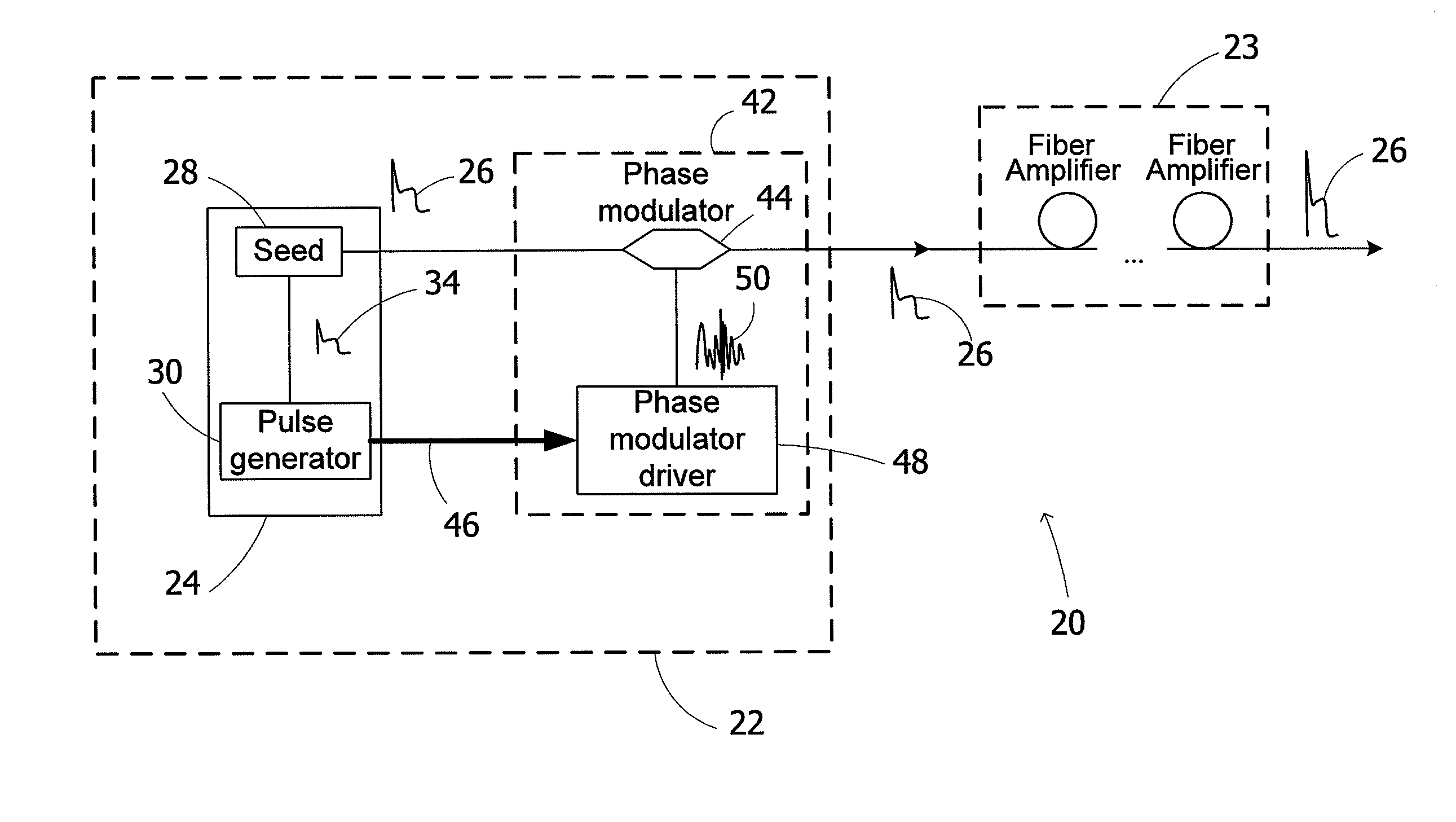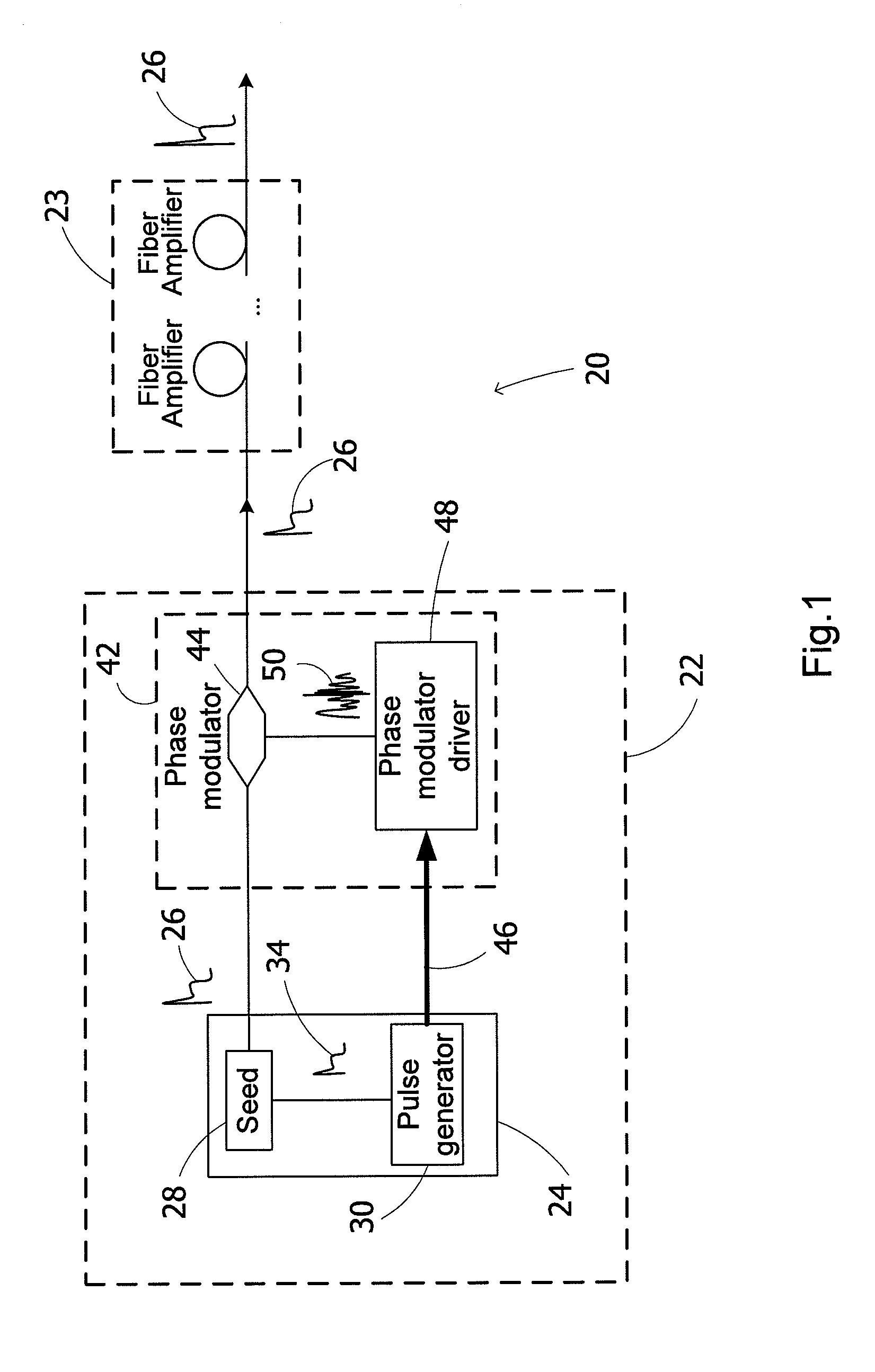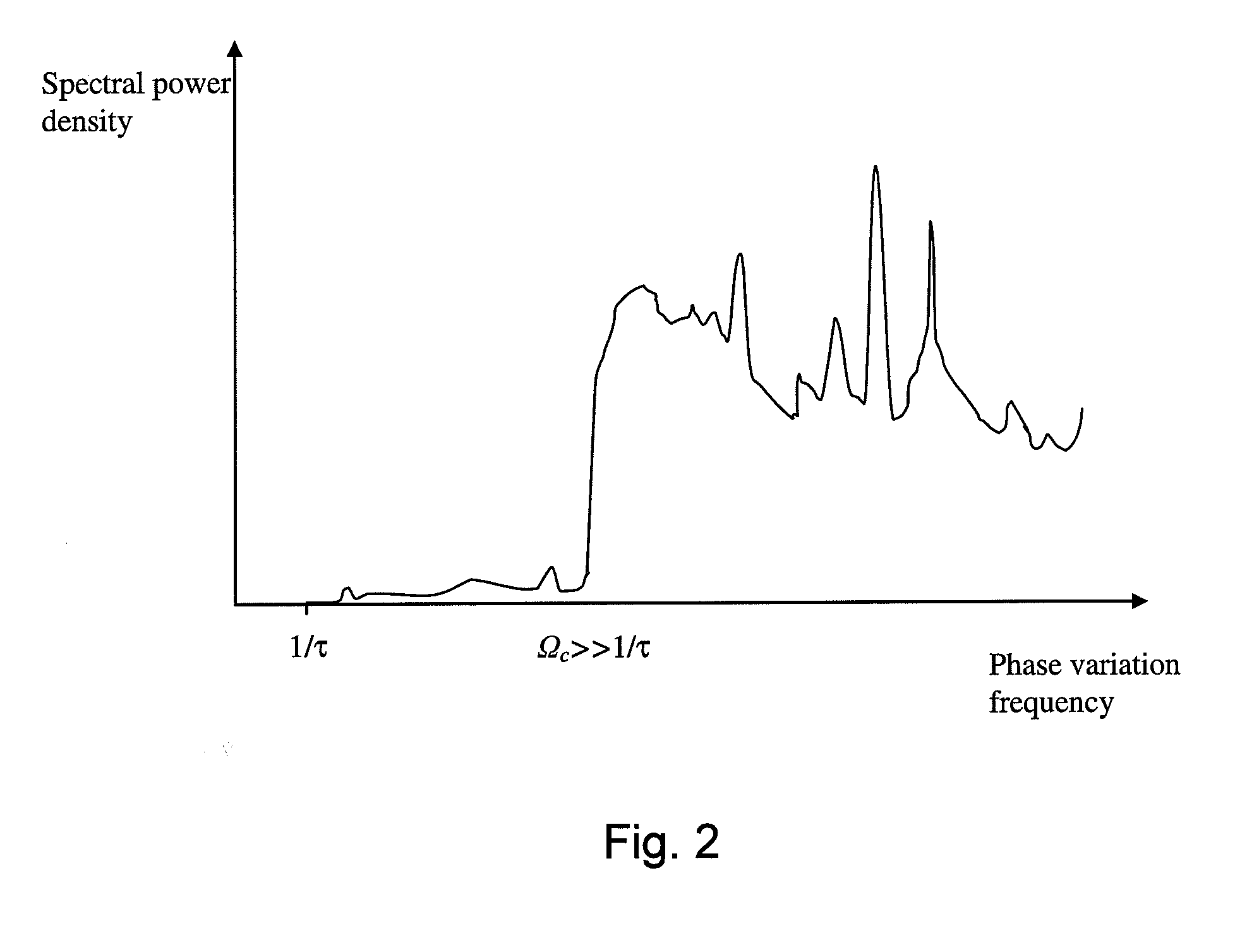Spectrally tailored pulsed fiber laser oscillator
a pulsed fiber laser and oscillator technology, applied in laser details, optical devices for lasers, wave amplification devices, etc., can solve the problems of limiting the maximum output power ultimately achievable in a given spectral bandwidth, permanent damage to the optical components of the laser, and degradation of pulse amplitude stability
- Summary
- Abstract
- Description
- Claims
- Application Information
AI Technical Summary
Benefits of technology
Problems solved by technology
Method used
Image
Examples
Embodiment Construction
[0055]Embodiments of the present invention generally provide pulse generating methods and pulsed fiber laser oscillators for laser systems adapted for high power applications such as memory repair, milling, micro-fabrication, drilling and other material processing applications. It will be understood that embodiments of the present invention may also be used in other contexts such as remote sensing or any other application which may benefit from high power pulses having good optical characteristics.
[0056]The expression “oscillator” is understood to refer to the portion of a laser system which generates light pulses. The oscillator may include a laser cavity or alternatively be based on fluorescent emissions. The oscillator may be part of a larger system including amplifying, beam shaping or any other optical component further defining the properties of the optical pulses generated by the oscillator.
[0057]The laser oscillators according to embodiments of the present invention are pref...
PUM
 Login to View More
Login to View More Abstract
Description
Claims
Application Information
 Login to View More
Login to View More - R&D
- Intellectual Property
- Life Sciences
- Materials
- Tech Scout
- Unparalleled Data Quality
- Higher Quality Content
- 60% Fewer Hallucinations
Browse by: Latest US Patents, China's latest patents, Technical Efficacy Thesaurus, Application Domain, Technology Topic, Popular Technical Reports.
© 2025 PatSnap. All rights reserved.Legal|Privacy policy|Modern Slavery Act Transparency Statement|Sitemap|About US| Contact US: help@patsnap.com



